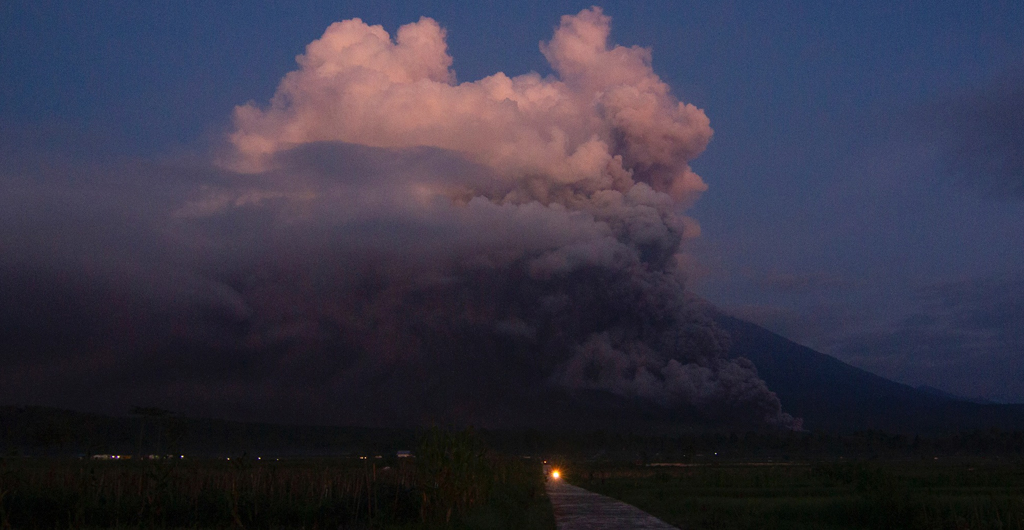East Java Indonesia on alert after Mt. Semeru eruption
Thousands of people in East Java, Indonesia, are on high alert after a powerful eruption from the island’s largest volcano led authorities to establish an 8-kilometre no-go zone and force the evacuation of whole villages.
According to Tholib Vatelehan, a Basarnas official, the provincial search and rescue agency sent teams to the worst-hit districts close to Mount Semeru to survey the damage, with low rainfall providing some relief.
“Yesterday, the rainfall level was high, causing all the material from the top of the mountain to come down. But today, so far, there’s no rain, so its relatively safe.”
There have been no casualties recorded, and aviation transport has not been significantly hampered.
The 3,676-meter volcano erupted on Sunday at 2:46 local time (0746 GMT). Residents’ video captured Mt. Semeru ejecting a massive cloud of grey ash well over its crater. The cloud later encompassed the mountain and the nearby rice paddy fields, highways, and bridges, turning the sky black. The Environment Ministry posted a video of a pyroclastic flow of lava, rocks, and hot gases pouring down the mountainside on Twitter.
Nearly 2,500 individuals were compelled to flee the eruption, according to police, and many of them used motorcycles to do so.
Indonesia’s volcanology and geological hazard mitigation agency upgraded the alert level for Mt. Semeru to the highest level on Sunday. According to the agency, residents were also advised not to approach within 8 kilometres (5 miles) of the top or 500 meters of riverbanks owing to the possibility of lava flows.
Last year, Semeru erupted, killing over 50 people while uprooting thousands more.
The eruption, located around 640 kilometres (400 miles) east of Jakarta, comes after a string of quakes in Java’s western region, including one that killed more than 300 people last month.
Indonesia has 142 volcanoes, making it the country with the most people who live close to a volcano (8.6 million within 10 km) (6.2 miles).



